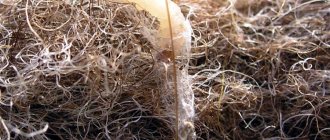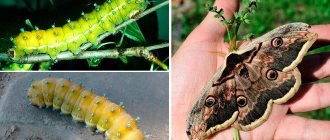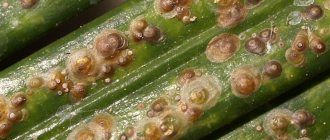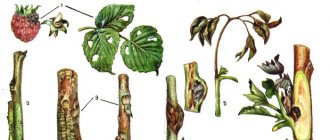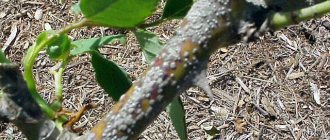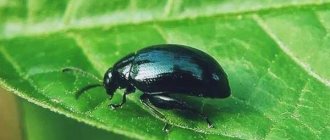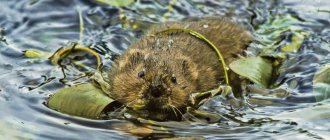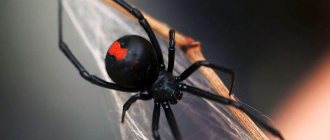To get a big harvest, it is not enough to choose a good variety, follow the rules of agricultural technology and carry out disease prevention. Considerable damage to plants is caused by earthen pests, which are practically invisible, and this complicates their detection.
They cause more problems than terrestrial insects, since the root system and base of the stem suffer. If they are damaged, it is almost impossible to save the plant.
Most often, damage to the garden, vegetable garden and flower beds is caused by insects - mole crickets, wireworms (larva of the click beetle), beetles (larva of the May beetle), root nematode, gnawing cutworm, carrot and onion flies. Moles, mole rats, shrews, earth rats and mice are not far behind them in terms of wrecking activity. Each of them has their own habits and taste preferences. Therefore, to fight effectively, you need to know everything about them.
The mole cricket is a species of orthopteran insect. Its body is brownish-brown, quite large in size (up to 5 cm), completely covered with small hairs. This pest quickly breaks through tunnels in the upper layers of the soil. It rarely crawls to the surface, mainly at night.
The mole cricket prefers moist soils rich in humus and humus, well warmed by the sun. Its appearance can be evidenced by winding, loosened ridges of earth, as well as plants that begin to rapidly die for no apparent reason.
Insects overwinter at a depth of 60 cm; they often gather in compost heaps. In the spring they mate, in the summer they make nests at shallow depths, where the females lay hundreds of eggs (on average 600-700 eggs). The larvae grow for about 2.5 years before becoming adults.
The mole cricket tops the list of soil pests, which is not at all surprising. She is a polyphage. That is, it harms not only root crops and potato tubers. This insect can destroy almost any plant - corn, tomatoes, cucumbers, peppers, eggplants, melons - everything that comes its way. It damages crops of grain and industrial forage crops, feeds on the roots of young fruit trees, berries and ornamental plant species. She eats everything - seeds (sown grains), shoots, plant roots. However, the bear is far from a vegetarian. It does not disdain earthworms, soil invertebrates and many small insects.
Methods of dealing with mole crickets
In nature, it, of course, has enemies - birds, hedgehogs, lizards, moles, shrews and ants (a threat to the larvae). Even the domestic cat makes its feasible contribution to the fight against the mole cricket, hunting for it like mice and rats. However, this is not enough. More radical measures are needed to save the harvest.
Chemicals
Special insecticides against mole crickets have long been developed. Previously, gardeners had to prepare their own baits, using boiled grain as a base, to which a potent agent was added.
One of the popular drugs for mole crickets
Now you can buy a ready-made drug that will act specifically on mole crickets without causing harm to the soil, earthworms and other beneficial insects. It is best to apply this product in the spring, a week before sowing, as well as during them.
Mechanical and other “folk” remedies
These folk methods of control are based on knowledge of the habits of insects.
- Traps in manure pits . Mole crickets prefer to overwinter in a pile of compost or manure. Therefore, with the onset of persistent cold weather, they should be scattered around the garden. This way the insects will die.
- Beer baits. Bury a jar or bottle where the mole cricket's passages are found, and then pour beer into the container. It is believed that insects attracted by the smell will become trapped and will not be able to escape.
Some people recommend installing light traps - garden lanterns and under them a container of water mixed with kerosene. Attracted by the light, mole crickets will hit the lantern and fall into the water. However, this method, which is much more effective against cockchafers, raises some doubts about the destruction of mole crickets, since it has been established that although they can fly, they rarely use their wings and only when it is very warm. Otherwise, their muscles simply will not be able to work. And since at night the temperature drops slightly even in summer, it is not a fact that insects will choose this particular method of movement.
Similarly, the method of pouring water with sunflower oil into the passages, which supposedly should push the insect to the surface, and the oil should not allow it to breathe, raises doubts. I just wonder how much water and, especially, sunflower oil (which is completely unprofitable) will be needed to fill all the passages. And this does not take into account the fact that the water will simply be absorbed into the soil, and not flow where the gardener wants.
And absolutely folk remedies, which are unlikely to help. Many people believe that unpleasant odors will scare away the mole cricket (onion skins, garlic cloves and even rotten fish). It’s just not known who will run away from the garden faster - the bear or the owner. It is better to plant plants with a pronounced aroma around the perimeter of the garden - chrysanthemums, garlic, cloves, mint, wormwood. If they don’t help, they will at least decorate the area.
Wireworm is the larva of a click beetle. It is easy to distinguish from other larvae by its hard yellow-brown body. The life cycle of a beetle lasts 4-5 years. There are many types of wireworms in nature, most of them are voracious pests. Some attack germinating seeds and roots of cereals. Others prefer to eat tubers and root vegetables. They often damage vegetable seedlings. They like to penetrate the stem and climb it above ground level. In this way, corn, melons, and tobacco are damaged. In vineyards, wireworms harm young shoots and buds.
The click beetle itself seems like a harmless bug. But the larvae...
Many people compare the damage caused by the wireworm to the damage caused by the Colorado potato beetle. But if the “striped” scout is easy to spot, then with the click beetle larva the situation is much more difficult. It is often discovered only during harvesting or processing. Moreover, damaged root crops are not suitable for storage because they quickly deteriorate.
The wireworm spoiled the potato tubers
Signs of plant damage are nonspecific. The seedlings turn yellow and wither, adult specimens slow down their growth and dry out. The specific cause can only be determined by carefully examining the plant and its root system. If it is a root crop, there will be visible passages on it, from which the pest itself often falls out.
The wireworm will not ignore the flower garden. It damages the bulbs of gladioli, lilies, dahlia tubers, and peony rhizomes. These crops begin to lag in growth, bloom weakly, and in advanced cases simply die.
Root mites
The root mite is small in size, has up to 3 legs, an oval light transparent body and sharp antennae. Destroys the onion from the inside; if you try to put pressure on it, it will fall apart and turn into dust. Root mites eat bulbous plants such as hyacinths, tulips, orchids and gladioli.
If an insect attacks a plant, it must be treated with insecticides, and diseased flowers must be isolated from healthy ones. The diseased crop must be removed from the soil layer, the roots and bulbs washed and soaked in an insecticidal solution. For prevention, pots in which infected plants grew should be washed and boiled for 20 minutes.
Measures to combat wireworms
Among the agricultural practices are autumn digging and early plowing. In such cases, the larvae die on the surface, since there is practically no heat. Further, during the growing season of garden crops it is necessary:
- regularly loosen the soil to destroy click beetle nests;
- promptly remove weeds and plant debris, where many soil pests can hide.
Crop rotation is also necessary. It is advisable to alternate planting potatoes and legumes, which not only help get rid of wireworms, but also enrich the soil with nitrogen. If this is not possible, experts recommend planting legumes between rows. Additionally, marigolds, phacelia, peas or mustard can be sown around the potato beds.
Liming is another method of controlling wireworms. These larvae are known to prefer acidic, moist soils. Therefore, once every 3-4 years, liming is carried out by adding ash, fluff lime or dolomite flour to the soil.
The last important point is watering correction. The wireworm does not like dry soil. Therefore, it should not be allowed to become waterlogged. Otherwise, an invasion of larvae cannot be avoided.
Chemical methods come down to the use of insecticides, which are applied according to the instructions. Each product provides protection for a certain period of time.
One of the preparations for treating tubers before planting
Biological preparations, unlike insecticides, are safer. They are developed based on entomopathogenic species of nematodes and some types of bacteria. These remedies only work on wireworms.
However, it should be borne in mind that tubers and root crops are affected only by beetle larvae, which develop in the soil within 4-5 years. Therefore, in order to get rid of the pest forever, it is necessary to regularly use insecticides and biological products throughout this period.
Among the folk methods of struggle:
- adding eggshells to the soil (a kind of liming);
- treating the soil with infusions of herbs (dandelion, celandine, coltsfoot);
- pre-planting treatment of potato tubers with infusion of celandine, nettle or dandelion;
- adding onion peels or mustard powder to the holes when planting.
Some advise generously watering the beds before planting seedlings with a strong solution of potassium permanganate, but this will acidify the soil, which will make it more attractive to wireworms. The method of digging spruce and pine branches into the beds works similarly on the soil. Allegedly, wireworms do not like their smell. Then a completely logical question arises: why are these larvae very common in mushrooms collected in coniferous forests? However, choosing a method to combat wireworms is an individual matter for each gardener.
Khrushchev or May beetle is a large insect. Adults begin vigorous activity in late April – early May. They harm fruit trees and shrubs by feeding on young foliage and sometimes flowers. However, gardeners and gardeners receive much more damage from the larvae of the cockchafer, which develop in the soil for 3-4 years. They are white, large and very voracious. They easily move underground and massively destroy root crops, roots and tubers of garden crops. Potatoes, corn, strawberries and even lawn grass are attacked by them.
May beetle larva
Reducing the number of pest larvae is quite difficult. Chemical warfare uses insecticides or biological agents. In the garden, many experts recommend sodding with white clover. Its rhizomes contain nodule bacteria that produce organic nitrogen-containing substances. Khrushchev larvae really do not like nitrogen and will try to leave the area.
Birds provide significant support to gardeners. Therefore, it is necessary to attract feathered helpers in every possible way by installing birdhouses and feeders. Hedgehog larvae happily eat hedgehogs, easily digging them out in the ground. These animals often settle close to human habitation.
To water the soil in the tree trunk circle in order to repel beetleworm larvae, use a strong infusion of onion peels.
Cutworms are several species of butterflies whose larvae (caterpillars) are found in the soil. The most dangerous species is the fall armyworm. This is an inconspicuous butterfly that leads a nocturnal lifestyle. Its caterpillar is earthy gray in color. It is polyphagous and is capable of infecting almost all plants - winter crops, beets, corn, sunflowers, potatoes, cabbage, carrots, melons, but the cutworm especially likes to gnaw the stems in the root collar area of young seedlings.
Methods to combat this pest are varied, but gardeners get the best results by using them in combination.
Agrotechnical practices include regular loosening of the soil and destruction of weeds, since butterflies lay eggs on many of them, and caterpillars like to hide under the lower leaves during the day.
Insecticides can be used to control cutworms. To prevent the larvae from damaging young seedlings, it is recommended to soak their roots in a working solution before planting, and if this is not possible, water the plant with it after planting. When re-processing, vegetable crops are simply sprayed.
Root nematodes are small white or light yellow roundworms, body length does not exceed 2 mm. Because of their size, they are quite difficult to notice. These pests of plant roots have a mobile hypum in their mouths, which they use to pierce the cells and suck out the juices. At the same time, they secrete enzymes, amino acids and other substances that block the functioning of all organs of the plant, and it gradually dies.
Root nematodes are divided into three groups:
- Gallic. They provoke the formation of elongated thickenings on the roots measuring 3-5 mm. Worms parasitize inside them, feeding on plant sap. These pests can affect more than 400 plant species - vegetables and ornamental crops. They damage carrots, tomatoes, eggplants, peppers, legumes and melons. Of the flowers, roses, clematis, begonias, and ficuses are sensitive to them.
- Living freely . These worms prefer sandy, porous soils. Thanks to this soil structure, they move quickly. Lettuce, carrots, and celery are affected.
- Nematodes with free cyst formation (golden potato, beet). They spread through cysts that form on the roots of plants and look like dark brown capsules no larger in size than a poppy seed. The golden potato nematode affects nightshade crops, and the beet nematode attacks plants from the Cruciferous family and beets. In addition to the general depletion of the plant, they contribute to the spread of pathogenic fungi, viruses and bacteria that provoke various diseases.
Cicadas
Cicadas feed on the sap of the plants on which they settle. Several hundred species of pests of this family live in the middle zone.
Eggs are laid by females in the root zone in early summer. The emerging larvae actively suck sap from the roots and stem. This leads to weakening of the plant and stunted growth, as well as a tendency to disease. Leafhoppers transmit many viral diseases that lead to plant death.
Pests feed on a variety of cultivated plants: strawberries, parsley, carrots, cucumbers, fruit trees and berry bushes.
For control, spraying with a solution of “Aktara”, “Karate” or “Zeon” is used.
Signs of nematode damage
- Strawberry . Reddish or yellow-brown spots appear on the leaves. Their petioles turn red and lose their edges. Gradually the leaves turn brown and then dry out or rot. Over time, the affected rosettes become deformed, and their central part dies.
- Potato . The plant produces few stems (1-3), the leaves on them are small, quickly turn yellow and dry out. Tubers practically do not set or there are very few of them.
- Onion. The plant has thick, curved feathers. Over time, they turn yellow and droop. The bulb inside is soft, loose, and rots quickly.
- Beet. The leaves of the plant turn brown and wither. The root crop lags behind in development and shows signs of rot.
- Chrysanthemums. These flowers are most often affected by nematodes. The first sign is the appearance of light yellow spots on the leaves, which gradually turn brown, dry out and fall off. The shoots become short and thickened. Plants either do not bloom at all or form small inflorescences. In addition to chrysanthemums, the nematode can attack asters, delphiniums, zinnias, phlox and begonias.
Centipede larvae
Centipede larvae are one of the main pests of lawns.
Mosquitoes of this species lay eggs in the turf in the second half of summer. Rainy weather promotes egg laying. The multiplied larvae go into winter, and in early spring they cause the greatest damage to the lawn, eating up the roots of the grass. Lawns lose their aesthetics - yellowed areas with wilted vegetation appear on them. Patches of damaged grass are especially noticeable in dry spring and summer.
To destroy the colony, lawns are watered in the fall with solutions of insecticides containing hexachlorane .
The oak flea beetle can be recognized by its half-dried purple leaves that easily fall off the branches. One of the most favorite delicacies of leafminer moths are chestnuts. If you also have these trees, then you can find out how to protect them from this pest by reading this article.
Acetamiprid is an insecticide that is non-toxic to bees. Read a detailed description of this substance at https://stopvreditel.ru/rastenij/borba/insekticidy-protiv-vreditelej/acetamiprid.html link.
Methods for controlling nematodes
To combat root nematodes, insecticides and biological preparations are used. Traditional methods of struggle are ineffective. Herbal decoctions and infusions do not help. You can plant plants containing phytoncides on the site - calendula, marigolds, mustard salad, garlic. They can repel pests.
It is best to carry out preventive measures in the fight against nematodes, namely:
- compliance with crop rotation;
- cultivation of varieties resistant to the pest;
- use of healthy planting material;
- regular liming of the soil;
- mandatory destruction of plant residues at the end of the season;
- sowing green manure.
Such measures will prevent the appearance of the pest in the soil and help preserve the harvest.
The carrot fly is a small insect with an oblong black body and is unremarkable. Its larvae damage carrots, parsnips, root parsley and celery.
When affected, the leaves of the plant acquire a purple-red hue, gradually turn yellow and dry out. Root vegetables lose their taste and shelf life.
Effective agrotechnical measures include early sowing of carrots and other root crops sensitive to the pest and immediate removal of affected plants. During the growing season, vegetable crops can be treated with insecticides or biological preparations.
“Corado” from carrot and onion flies
Preventive measures include:
- compliance with crop rotation;
- alternating crops when sowing (it is better to plant carrots in areas where garlic, onions, tomatoes, and radishes previously grew);
- when sowing, alternate rows of carrots with rows of onions or garlic;
- thin out seedlings in a timely manner;
- do not allow the soil to become waterlogged.
It is thanks to preventive measures that you can save plants and get a full harvest.
The onion fly is one of the types of flower flies, the larvae of which damage onions, garlic and bulbous flower crops. The insect is small, yellowish-gray. The larvae are white, up to 10 mm long. They penetrate into the plant from the bottom or through the base of the leaves. They eat the bulb from the inside. The leaves of damaged plants turn yellow and wither, and the bulb itself rots. Some larvae are able to migrate to neighboring bulbs.
Onion fly larvae eat the onion
Early planting or sowing of onions can prevent onion fly damage. When pests are identified, diseased plants must be immediately destroyed, and the remaining ones must be treated with an insecticide.
As part of prevention, you should:
- follow the rules of crop rotation, replanting onions on the site no earlier than after 4 years;
- pickle planting material with manganese and copper sulfate;
- treat plants with repellents (tobacco, hot pepper, ash);
- use soil insecticides (for example, Bazudin).
It is also allowed to treat plants with insecticides or biological agents during the growing season, but provided that the onions are not grown for feathers.
You should not lose sight of the animals that live in the ground and, during their activity, cause no less damage to vegetable and garden crops than insects.
You need to know the enemy by sight
Various types of insects constantly attack plantings in gardens and household plots, and only effective control of them can help save the harvest. In addition, many insects that are pests of the garden and vegetable garden over time develop immunity to the pesticides and preparations used. Therefore, the methods of dealing with them have to be changed.
The photos below of garden and vegetable pest insects will help you accurately identify them and take timely measures to save the vegetation. According to their lifestyle and diet, garden pests are divided into several groups:
- larvae and beetles living in the ground: mole crickets, mole crickets, butterfly caterpillars, scale insects, wireworm larvae, beetles, etc.
- flying pests of gardens and vegetable gardens include Colorado beetles, whitefly butterflies, moths, sawflies, leaf rollers, May beetles, cutworms, weevils, etc.;
Below are descriptions of the most common pests in the garden.
Moles
Most often, gardeners and gardeners think about them when they find randomly located mounds of earth on their site. However, they inadvertently cause damage to plants and lawns.
Mole caught
Moles are insectivores. They feed on any animal objects they encounter on their way. Often their victims are earthworms, which is not very good, but otherwise, moles destroy wireworms, mole crickets, May beetle larvae, weevils and slugs. They do not cause damage to plants on purpose, but only when digging tunnels, when their roots are exposed.
Ash variegated bark beetle
Ash variegated bark beetles are pests of apple, pear, walnut, olive, oak, maple and lilac trees.
Adult beetles overwinter in the bark of root zones below the soil level. Larvae and adults gnaw irregularly shaped tunnels (called mines) in the roots, as well as thicker trunks and branches. More often, insects damage weakened trees, causing significant damage to gardens and forests.
Control measures include timely cleaning of the garden and forest from infected trees and attracting insectivorous birds. During active flight, the lower part of the trunks, where bark beetles accumulate, is treated with insecticides.
Earth rat
The largest representative of the vole family. However, this is where its similarities to mice end. She digs holes in the ground, and their entrances are quite noticeable. An earth rat can eat everything that grows in the garden - “from tops to roots,” and if it starts to starve, it will sneak into the house. It spoils crops, food, fruits, destroys bird nests, and gnaws the bark of trees. And this is only part of her “exploits”. And if you consider that this rodent has excellent fertility, then even if one mink is discovered, the gardener will have to prepare for a large-scale war.
Caterpillars
Caterpillars are small worms with a body length of up to 2 cm. The larvae are variegated or monochromatic in color. They feed on the fleshy part of the green mass; some representatives wrap the leaf in a silk thread. The appearance of caterpillars is fraught with damage to the plant’s immunity. It weakens and can be susceptible to various diseases.
Pests can be found on cyclamen, balsam or geranium. You can protect the plant from the caterpillar by treating the foliage with a soap solution and then washing it with hot water.
Field mice
Voles cause no less harm than earth rats. They spoil potato tubers and flower bulbs, and gnaw the roots and bark of trees and shrubs. Like other soil pests, mice dig holes, but the piles are much smaller, and the remains of gnawed roots can be found in them.
Voles often live in country houses
Under favorable conditions, they can bear offspring every month, multiplying exponentially. The only thing that can bring relief is the fact that not all voles survive in harsh winters.
Mining flies
Mining flies are presented in the form of small insects with transparent gray wings and a body length of up to 3 mm. They lay translucent, whitish or yellowish eggs on the underside of foliage. Generation duration ranges from 20 to 35 days.
Harm to the plant is caused when its tissue is pierced by drinking the juice. The pest can be found on chrysanthemums and violets. If masonry is detected, the affected leaf will need to be removed and the plant treated with one of the following preparations: “Karbofos”, “Aktellik”, “Aktara”, “Tanrek”, “Apache”.
Shrew
It looks like a mouse, only they have an elongated nose in the form of a proboscis.
The shrew ate the Ratobor grain bait
It feeds on larvae, earthworms and insects. Therefore, like a mole, it does not engage in deliberate sabotage. However, in the process of digging, it damages the root system of plants. Because of this, its proximity, despite the obvious benefits, is still unpleasant.
Earthworms
Earthworms are the main soil formers that contribute to soil aeration and moisture.
They feed on plant remains, but pose some danger to immature garden and flower crops. Actively moving in the ground, worms can damage thin roots and cause plants to dry out. Indoor flowers can suffer the most from worms.
It is almost impossible to fight these insects in open ground. But it’s quite easy to protect indoor flowers from their effects. To do this, place the pot in a bowl of water for eight minutes. The worms begin to choke and crawl out on their own.
How to deal with pest animals
Methods of combating various types of animal pests are very similar. However, they may differ in effectiveness.
- "Biological weapons". Cats don't just hunt mice and rats. They can even catch a mole. However, no matter how capable pets are, cats still cannot cope with a large number of rodents.
- Mechanical traps (various stranglers and crushers). It is not difficult to make the devices and install them; it is problematic to catch an animal in them. The main condition is to find a fresh pile of earth and dig it up. Animals do not like drafts, they will return to fix everything and end up in a trap. But this way you can catch only a few pests. And as you know, their population, especially rats and mice, is rapidly increasing. That is, you will need a lot of devices. The method is inhumane and also unpleasant, since no one will like to clean the traps from residues later.
- Ringing, rattling, vibrating devices. You can make them yourself. First of all, moles and mole rats will not like such homemade products.
- Flooding of holes. A dubious method, considering that the total length of the tunnels can reach 250 m. On the one hand, a huge amount of water will be needed, and on the other hand, this method of control threatens with banal waterlogging of the soil.
- Smoking animals out of their holes. In terms of “efficiency” it is not inferior to flooding. An exception may be smoke bombs installed by professionals from the SES. However, this is also a controversial issue.
- Ultrasonic repellers. Ultrasonic waves from properly installed devices are not liked by underground residents, and they try to leave the site.
- Planting plants. First of all, black elderberry is recommended, since its roots saturate the soil with substances that rodents cannot tolerate. On the one hand, this ornamental shrub will decorate any area, and its berries can be used for medicinal purposes (at least make a compote and drink it when you cough). On the other hand, elderberry grows quickly, forming thickets if it is not constantly controlled. An alternative to elderberry can be garlic, tansy, black root, imperial hazel grouse, mint, and wormwood.
- Various “folk-barbaric” methods. Dropping bottles of vegetable oil, scattering sugar mixed with lime, using a mixture of gypsum, flour and sunflower oil or crushed glass with wheat porridge and animal fat. There are many recipes, and they undoubtedly give results.
- Placement of fiberglass, fine mesh, metal sheets, slate and similar material around the perimeter of the area. It's labor-intensive, but the method really works. Such a fence does not allow pests into the garden.
- Products with strong odors (naphthalene, creolin). Sawdust or pieces of fabric soaked in substances are laid out around the trunks of trees, grapes and shrubs before covering them for the winter. This repels rodents and the bark remains intact.
- Chemicals. They are laid out around the holes. However, there is no guarantee that they will attract pests when there is already a lot of food around. Moreover, there is a risk that poisonous baits may be eaten by birds or other animals (it all depends on the composition of the product). But the disadvantages of this method do not end there. Pets can become poisoned if they are tempted by easy prey that has already tasted the “treat.”
In fact, there are many more pests in the soil. This is due to the fact that many insects undergo the larval stage in the soil, where food can always be found in the form of roots and plant roots, and at the same time protection from adverse weather conditions and natural enemies - birds and small animals.
Animals that live in the soil and harm the garden lead a hidden lifestyle, occasionally appearing on the surface of the earth, and only at night. Therefore, they are also difficult to catch, and the war against them is even more difficult than against insects. Success in it can be guaranteed only under two conditions: the presence of “angelic” patience and the use of an effective method. This means that you don’t need to try everything, but use only proven methods.
melon aphid
Numerous scatterings of tiny green or black aphids can destroy many plantings of vegetable and berry crops.
Important!
Aphids settle in colonies. Feeding exclusively on plant sap, which they suck from young shoots, they poison plants with injected poison and can carry infections and viruses. In the absence of timely measures to destroy aphids, they can completely destroy most of the crop.
Methods for controlling aphids are carried out in several ways:
- mechanical, washing away insects with a stream of water;
- using a solution of wood ash and soap, decoctions of medicinal and other plants (tansy, yarrow, garlic, dandelion, tobacco, etc.);
- destruction of ant colonies that become carriers of aphids;
- chemical insecticides.
Melon aphids and spider mites
Fools
Poduras are also called springtails and springtails. Small, mobile and jumping insects are characterized by a white elongated body up to 2 mm long. They are mainly placed on the surface of the substrate. Some varieties of the parasite have a jumping fork under the abdomen. This is why the insects are sometimes called forktails.
They appear in the soil layer when indoor flowers are over-irrigated. They are often located on the surface or near the base of the container, closer to the drainage holes. Microorganisms and rotten plant debris act as food.
Parasites do not cause any particular harm to the crop, but after their appearance it is necessary to reduce the amount of irrigation, otherwise the substrate will sour and the roots will rot. If there are many insects on a flower, underground shoots and young roots are deformed. For this reason, the root system begins to function poorly.
During irrigation, they can float on the surface of the water and jump in different directions. Often, small earthen piles and excrement of a certain shape may remain on the surface of the substrate.
Violets, cyperus, dracaena, ficus, adenium, dieffenbachia, gardenia, and azalea may be at risk. To eliminate parasites, it is necessary to reduce the amount of watering or transplant the crop into a new soil mixture with a drainage layer. Any insecticide can be used as chemical preparations.
Shchitovka
The scale insect looks like a brown growth 4 mm in size, which is located on the stem, in large quantities on the fruits and the back of the leaves.
The photo shows the most common pest of indoor plants - scale insects.
Insects stick to the crop, sucking out all the nutritious juices from it. As a result, the plant begins to turn yellow and slowly dry out. The situation can get worse if fungus appears in the cracks left by the parasite's jaws. Pests are mainly located on begonia, lemon, ivy, asparagus, fern, orchid, ficus and zamioculcas.
There are several methods of struggle:
- treatment with a strong soap solution;
- the use of chemicals in the form of “Aktellik”, “Aktara” or “Inta-vir”;
- washing the plant with a hot shower;
- remove insects by hand and brush all shoots with a soft brush.
Armored mites
Armored mites have a dark brown or black body with a shiny tint. Its dimensions reach approximately 0.9 mm. Brown or orange-brown eggs can be immediately noticed on the flower.
Pests can crawl throughout the crop, but eggs are laid only in decaying organic matter, namely, on dead yellowed foliage that has not been removed, in rotten roots and fallen leaves. They require moist soil and a moist environment to thrive. As a result, the plant stops developing, dries out and ultimately dies.
Dangerous insects often attack orchids. To eliminate the problem, you can use insecticidal compounds in the form of “Sunlight”, “Nisoran”, “Vermitek”, “Apollo” or “Fitoverma”. However, insects can adapt to chemicals. In this regard, the plant can be re-treated with drugs from a different chemical group.
Mealybug
The body of the mealybug is covered with a powdery coating that resembles fur. Grayish or cream-colored parasites are easy to spot against the green background of the plant. They gather in small groups and secrete honeydew.
The liquid attracts fungus, which becomes an additional threat to the plant. The louse digs into the soft tissues of the flower and sucks the juice out of it. The pest appears on orchids, fuchsias, palm trees, hibiscus, and cacti.
If detected, foci of infection must be immediately treated in one of the following ways:
- treatment with soap solution, which is made from 1 tsp. grated laundry soap diluted in 1 liter of water;
- you will need to completely change the soil, rinse the root system of the flower with hot water, the temperature of which reaches 50 °C;
- wiping the affected areas with an alcohol-based solution;
- manual collection of insects followed by washing the green mass of the plant under a shower head.
Plants can be treated with chemicals such as Karbofos, Aktara, Confidor.



